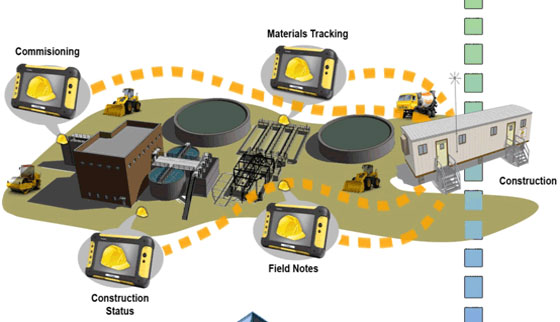Building Lifecycle Management (BLM) can be termed as a process for designing, assembling, and maneuvering a facility with a single set of interoperable data.

BLM employs a BIM Level 3 approach to allow a exceedingly developed Extended Collaboration process set up on the basis of Manufacturing industry best practices. BIM Level 3 will help in improving construction standardization, long-standing value for project owners as well as profit sharing for AEC project contributors.
BLM functions through a strong Product Lifecycle Management (PLM) system that produces a well-organized environment to organize complicated data associated with AEC (Architecture, Engineering & Construction) industry.
A BLM system is originated with the inclusion of BIM data to a PLM system.
BLM offers a wide array of significant advantages which range from better productivity, sustainability, and quality, as well as reduced waste, risk, and cost. BLM brings these advantages by disposing of rework, lessening RFIs (Requests For Information), consolidating data, contextualizing information and most of all forecasting outcomes perfectly.
Benefits:-
As the data are consolidated centrally, it facilitates eliminating version control issues, possibilities for individual error, and even the requirement to handle files.
The users will be able to avail a single live database through web services and get rid of the issues like , rework (e.g., unnecessary drawings) and frequentness to a great extent.
With a BLM system, the users can solve any problem practically in advance. So occurrence of faulty RFIs, submittals, and change orders are minimized significantly.
Designers will be able to undertake more informed decisions inside a wealthy data context and keep up superior control over the quality of the finished product through BLM.
By working together under a BLM environment, the construction firms and building systems manufacturers can get the clear ideas on project requirements. By getting authentic data, builders and suppliers can make the coordination process better and understand the design intent efficiently.
BLM is formed to minimize waste by forecasting outcomes perfectly as well as detecting prospective clashes and optimizing practices. It will prevent expected cost overruns and standard risk margins.
By following the same system, BLM also minimizes risk to the project schedule, worker safety, and construction budget generally.
Manufactured systems like curtain walls and fac¸ades are considered as the most complex and expensive constituents of a construction project. The fac¸ade includes 15 percent of a construction budget. Generally Fac¸ade models do not involve data on the fabrication process, but manufacturing time can be trim down to a great extent (nearly up to 50 percent) if the fabrication process is identified in the design phase. A BLM system with transactable BIM data can make a strong collaboration amid the designer and the fac¸ade manufacturer.
While performing with building product manufacturers, the designers provide guarantee that the design intent is recognized and supply chain efficiency is enhanced, the whole project will be benefited.
BIM data from a series of systems are resolved inside the BLM environment, where issues are recognized and marked for further processing.

Image Courtesy : skybim.com
Reference:- www.perspectives.3ds.com
~~~~~~~~~~~~~~~~~~~
Published By
Rajib Dey
~~~~~~~~~~~~~~~~~~~
No comments:
Post a Comment